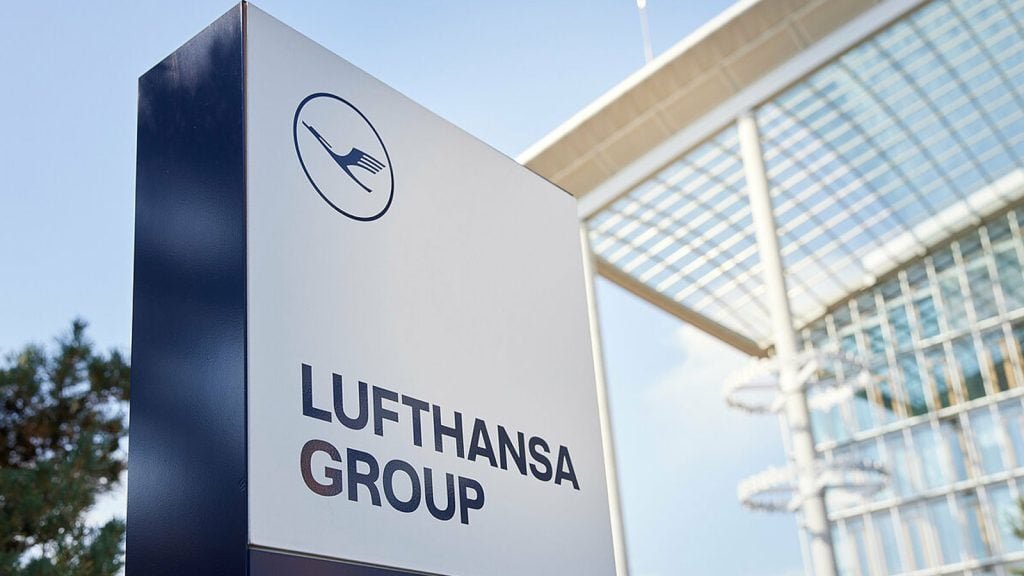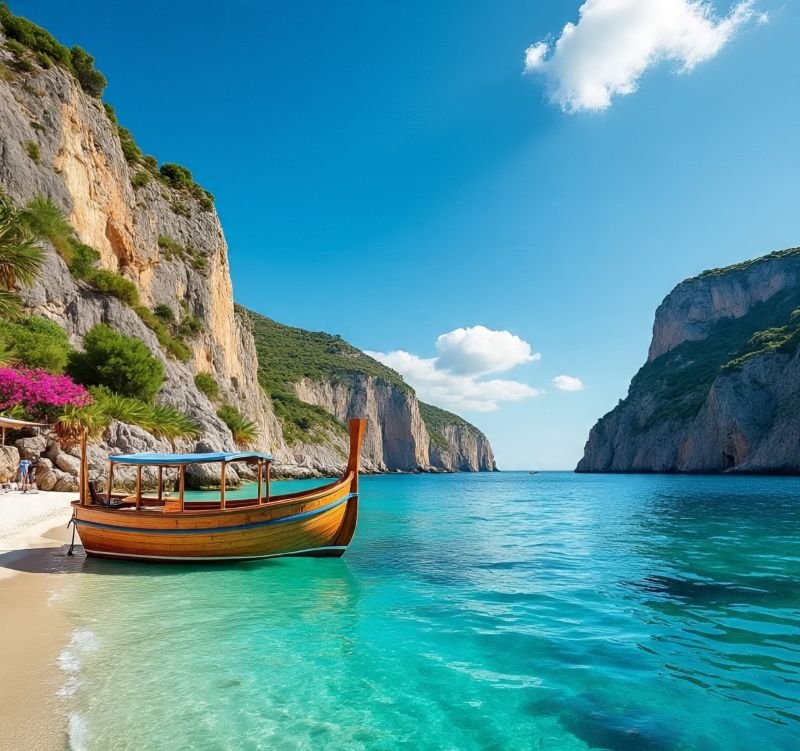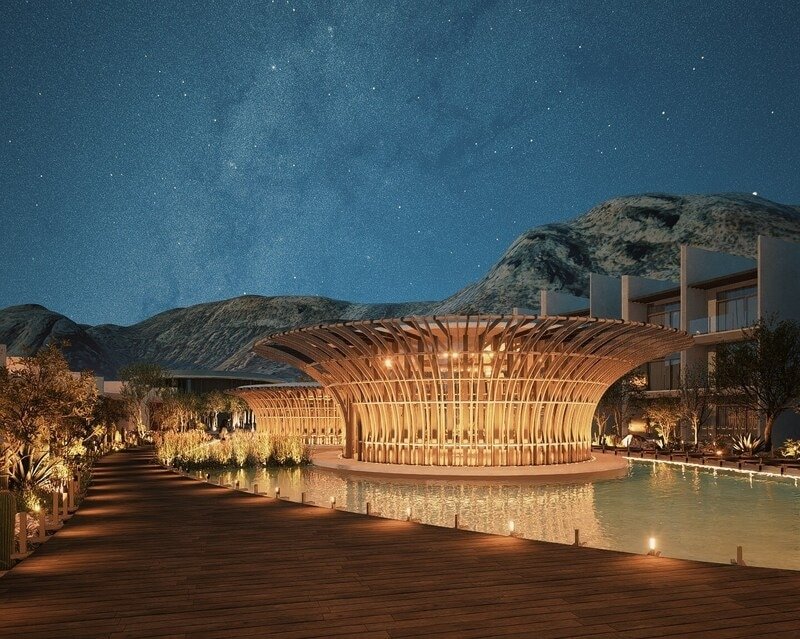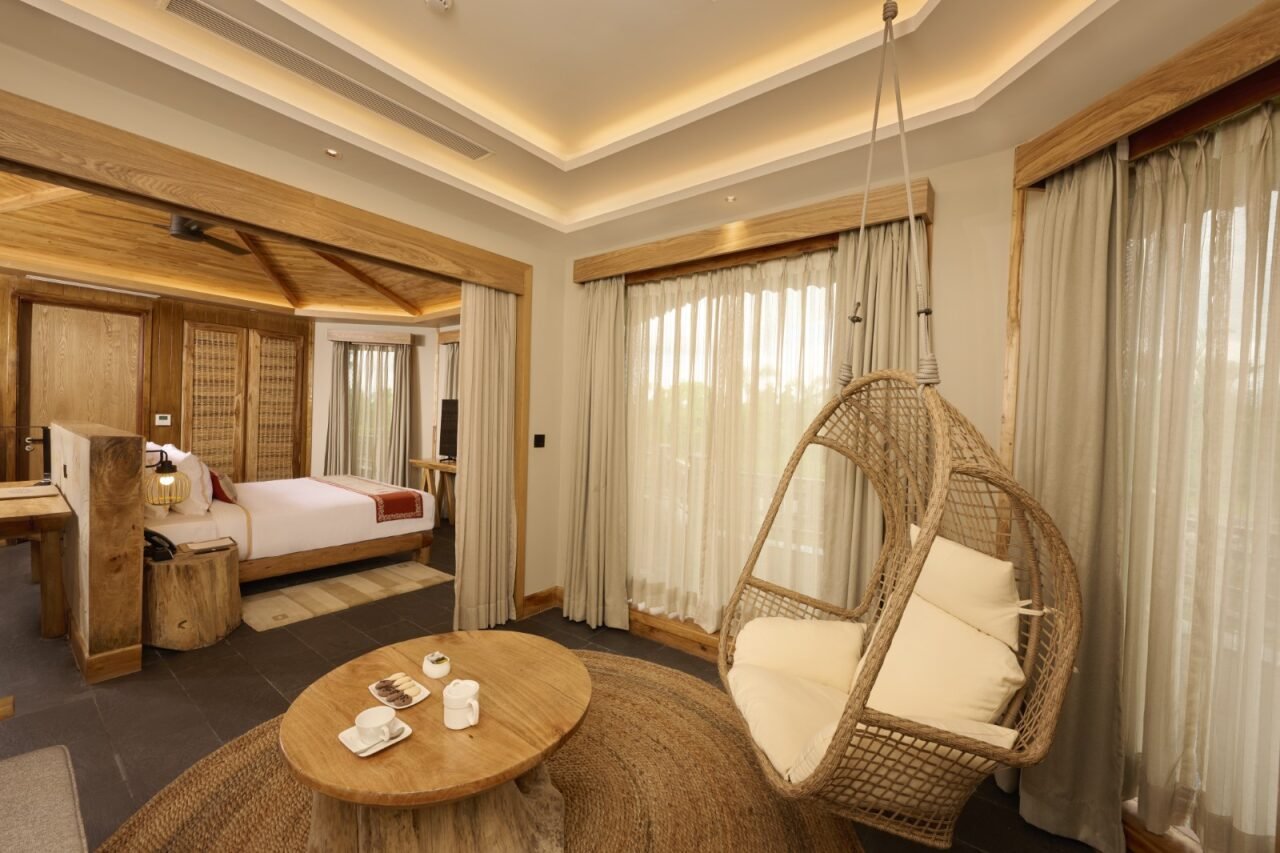Travel Trends
Lufthansa Group increases adjusted EBIT by 27 percent in the 2nd quarter of 2025

The Lufthansa Group reported 10.3B euros Q2 revenue, 1B euros net profit, driven by passenger growth, ITA investment, logistics gains, and currency effects. Carsten Spohr, Chairman of the Executive Board and CEO of Deutsche Lufthansa AG, says: “The Lufthansa Group remains on course. Although the second quarter was again marked by geopolitical crises and economic uncertainties, we are today confirming our positive outlook for the full year. However, 2025 will remain a year of transformation for us, as delays in aircraft deliveries, certifications, and engine overhauls continue. The disproportionate burden on European airlines due to unilateral EU regulations also continues to put us at a disadvantage in global competition.
In this challenging environment, we were able to increase our operating result by almost a third in the second quarter and double the Lufthansa Group result. The basis for this economic success is and remains the regained operational stability of our airlines. Thanks to the tremendous commitment of our employees on board and on the ground, we are now able to report positive operating results for the first six months of the year. Our core brand achieved its best stability and punctuality figures since 2016. This not only significantly improved customer satisfaction but also had a noticeable impact on earnings due to lower compensation payments.
Lufthansa Cargo and Lufthansa Technik once again demonstrated their global leading performance in the first half of 2025. It is also encouraging that our investment in ITA Airways is already contributing to the Group’s financial success.
We are continuing our necessary efforts to increase efficiency, productivity, and profitability, particularly in the turnaround of our core brand, in order to expand our position as the world’s largest airline group outside the US.”
Results
In the second quarter of 2025, the Lufthansa Group increased its revenue by three percent year-on-year to 10.3 billion euros (previous year: 10.0 billion euros). The Lufthansa Group generated an operating profit (Adjusted EBIT) of 871 million euros (previous year: 686 million euros). The improvement in earnings was mainly due to the four percent expansion of the flight program in the passenger business, a positive result from the investment in ITA Airways of 91 million euros, partly due to currency effects, and the doubling of the operating result of the logistics business segment compared to the previous year. As a result, the operating margin increased by 1.5 percentage points year-on-year in the second quarter. The Group net result was 1.01 billion euros, more than double the previous year’s figure (469 million euros). This disproportionate increase was due to extraordinary tax effects and currency effects.
Passenger numbers and traffic development
In the first half of the year, more than 61 million passengers flew with the airlines of the Lufthansa Group, an increase of two percent compared with 2024. In the second quarter alone, the airlines welcomed around 37 million passengers (previous year: 35.9 million) on board. Despite a four percent increase in seat capacity, the load factor remained stable compared with the previous year at 82 percent.
The passenger airlines’ revenue per available seat kilometer (RASK) declined slightly by 0.9 percent in the second quarter compared with 2024 after adjusting for currency effects. This was primarily due to lower average prices in the European business as a result of intensifying competition. In contrast, average revenues from intercontinental traffic remained stable despite a market-wide expansion of capacity. Unit costs (CASK) excluding fuel and emissions expenses rose by 4.1 percent compared with the same quarter last year due to ongoing cost inflation, driven in particular by personnel and location costs.
Overall, revenue from passenger airlines rose by three percent to 8.2 billion euros in the second quarter (previous year: 8.0 billion euros). Adjusted EBIT increased to 690 million euros (previous year: 581 million euros). All airlines generated a positive result in the second quarter.
In the first half year, revenue for the passenger airlines totaled 14.1 billion euros, representing growth of around four percent compared with the previous year. Adjusted EBIT improved to -244 million euros (first half of 2024: -337 million euros). The positive development is mainly attributable to lower fuel costs, higher income from investments, and the absence of financial strike-related expenses in the previous year. In contrast to the first half of 2024, network stability also improved significantly, resulting in a 106 million euros reduction in financial expenses due to flight irregularities.
The integration of ITA Airways, in which the Lufthansa Group holds a 41 percent stake in the first phase, is continuing to progress. The benefits for customers are already clearly noticeable. Since the beginning of July, the airlines of the Lufthansa Group and ITA Airways have harmonized the benefits for their respective status customers, such as mutual lounge access, priority boarding, and conditions for additional baggage.
Also since July, flights from Lufthansa, SWISS, Austrian Airlines, and Brussels Airlines can be combined with long-haul flights from ITA Airways in a single booking. This has been possible for short- and medium-haul flights since March.
Starting in September, ITA Airways guests will be able to store their travel profile electronically in the Lufthansa Group Travel ID and benefit from the associated digital customer services of the Lufthansa Group.
Lufthansa Airlines continues to implement Turnaround program
Lufthansa Airlines’ Turnaround program remains on track. Increasing operational stability forms the foundation for the success of this program. Significant progress has already been made in this regard: punctuality and reliability achieved their best figures in ten years in the first six months. At the same time, revenues increased. Revenue from flight-related ancillary services rose by more than 25 percent in the first half of the year. In addition, structural measures have been initiated with the announced closure of the customer service center in Peterborough (Canada) and the associated reduction in personnel, which will make Lufthansa Airlines more efficient in the long term. The Turnaround measures are expected to have a gross earnings effect of 1.5 billion euros in 2026 and 2.5 billion euros in 2028.
Lufthansa Technik at record levels in the first half of the year
The sustained high demand for air travel is leading to a further increase in demand for maintenance and repair services. Lufthansa Technik’s revenue rose by eight percent to 2.0 billion euros in the second quarter (same quarter last year: 1.8 billion euros). Ongoing material shortages, the US dollar exchange rate and increased US tariffs led to a ten percent increase in expenses compared with the same quarter last year. Nevertheless, Lufthansa Technik achieved an Adjusted EBIT of 310 million euros in the first half of 2025, once again setting a new record.
Balance sheet strengthened, debt reduced
The Lufthansa Group’s operating cashflow amounted to around 2.8 billion euros in the first half of the year (previous year: 2.7 billion euros). Net investments remained at the previous year’s level at 1.6 billion euros. Overall, the Lufthansa Group generated an Adjusted Free Cashflow of 1.04 billion euros (previous year: 878 million euros).
Net debt decreased slightly to 5.5 billion euros compared with the end of 2024 (December 31, 2024: 5.7 billion euros). Net pension obligations fell by 400 million euros to 2.2 billion euros due to the higher discount rate. The Lufthansa Group’s available liquidity increased by 100 million euros compared with the beginning of the year to 11.1 billion euros.
Till Streichert, Chief Financial Officer of Deutsche Lufthansa AG, said: “We continue to operate in a volatile environment with high uncertainty and high cost pressure. I am therefore pleased to be able to present another quarterly result that is significantly above the previous year and to report progress in our Turnaround program. In our assessment, opportunities and risks are balanced. We therefore continue to expect a full year 2025 result significantly above the previous year and Adjusted Free Cashflow at approximately the previous year’s level. We thereby confirm our guidance. At the same time, we are closely monitoring macroeconomic developments and can respond flexibly to changes in the business environment.”
Outlook
Global demand for air travel remains strong. However, geopolitical crises and macroeconomic uncertainties, particularly commodity price and exchange rate volatility, are affecting the accuracy of forecasts for the rest of the year. In addition, the tendency of many travelers to book at shorter notice is limiting visibility for the second half of the year.
Despite ongoing global uncertainties, the Lufthansa Group is reaffirming its forecast for the full year and expects operating profit (Adjusted EBIT) to be significantly higher than last year (previous year: 1.6 billion euros) with capacity growth of around four percent.
The company continues to expect Adjusted Free Cashflow to remain at the previous year’s level (previous year: 840 million euros). This includes net investments of 2.7 to 3.3 billion euros, primarily for the ongoing fleet renewal.
Among other things, this will finance the remaining payments for the first Boeing 787-9 long-haul aircraft at the group’s largest hub in Frankfurt. By the end of the year, up to ten of these ‘Dreamliner’ with the new Allegris seat generation are expected to be added to the group’s fleet. In summer 2026, Lufthansa Airlines plans to operate a total of 15 Boeing 787-9 s from Frankfurt, more than doubling the number of aircraft offering the Lufthansa Allegris premium product to customers.
The article Lufthansa Group increases adjusted EBIT by 27 percent in the 2nd quarter of 2025 first appeared in TravelDailyNews International.
Travel Trends
Othonoi, a serene Greek island just twelve miles from Corfu, is quietly rising amid booming travel trends as a peaceful alternative to mass tourism. Could this be your next escape?

Sunday, August 3, 2025
Othonoi
It was conveyed that Othonoi, a little-known island located 12 miles northwest of Corfu, where the Ionian and Adriatic Seas meet, was gradually gaining recognition as a peaceful alternative to overcrowded travel destinations. Although it covers just 3.9 square miles, it was suggested that the island’s serene ambiance and natural beauty made it stand out sharply against Corfu, which reportedly now hosts over two million tourists annually. Observers indicated that this contrast was drawing interest from travelers weary of mass tourism.
The Crowd‑Driven Shift Toward Othonoi
It was explained that tourism to Corfu had grown substantially since 2019, with international flight arrivals increasing by 32% and ferry passenger numbers rising by 31%. Such figures were interpreted not merely as proof of popularity, but also as evidence of infrastructural strain and visitor overwhelm. In direct response, travelers were described as turning toward Othonoi for its tranquil pace—reachable via a short ferry ride, the island maintained a sense of seclusion and calm that Corfu could no longer guarantee.
Mythical Resonance and Cultural Depth
The narrative reportedly emphasized that Othonoi possessed deep-rooted connections to classical mythology. It was widely regarded as the island of Ogygia, where the nymph Calypso held Odysseus captive for seven years, according to Homer’s Odyssey. It was observed that the Cave of Calypso, situated near Aspri Ammos Beach, still exists and continues to intrigue visitors with its legendary resonance. The continuing presence of cypress trees—noted by Homer for their scent—was said to evoke an ancient sensory experience, merging past and present in a unique way.
Local Character and Seasonal Dynamics
Sources indicated that despite its compact size, Othonoi was divided into two principal regions—Ano Panta and Kato Panta—with more than 20 small settlements distributed across the terrain. It was reported that Ammos, the island’s port, served as the central hub, offering modest lodging, dining, vehicle rental options, and cultural stop‑offs. Other villages mentioned, including Chorio (the capital), Dafni, and Damaskatika, were said to offer deeper insight into island life. The summer population reportedly peaked at slightly under 400 residents, while winter saw a dramatic decline—an ebb that was said to contribute significantly to the island’s reflective tranquility. Reportedly, arrival options included a ferry from Corfu, taking around three hours, or a shorter service from Agios Stefanos, lasting approximately one hour.
Secluded Beaches and Panoramic Heights
It was noted that Othonoi was home to a range of untouched coastal spots, many accessible only by boat. Among the beaches named were Molos, Kamini, Kanoula, Kontoskes, and notably Aspri Ammos, celebrated for its white sands and turquoise waters. The Cave of Calypso, again highlighted, was reported as a key convergence of myth and environment. For those inclined toward elevation and view, ascend Mount Imerovigli, the island’s highest point at 1,296 feet, which was said to provide sweeping views over both the Ionian and Adriatic Seas, as well as nearby Diapontian Islands. The climb was described as offering not just beautiful vistas, but also a potent sense of solitude and reflection.
Emerging Traveler Preferences
It was suggested that as popular destinations became more saturated, global travelers—particularly from Europe and the UK—were reorienting their priorities. Their preferences were said to include:
- Lower visitor density, enabling more personal and immersive experiences
- Cultural or historical significance, offering meaning beyond sun and sand
- Reduced environmental impact, aligning with eco-conscious values
- Authenticity over commercial spectacle
Such preferences were interpreted as part of a broader shift toward micro‑tourism, wherein travel experiences are rooted in small-scale, sustainable, and locally grounded engagement rather than mass-market packages.
Broader Industry Implications
Commentators conveyed that the quiet rise of Othonoi might be emblematic of a larger transformation in how travel is approached and marketed. It was posited that as interest in less commodified, more meaningful destinations grows, other small islands and overlooked areas worldwide may come into focus. It was proposed that nations might begin to highlight such hidden gems, promoting a more balanced tourism model that prioritizes heritage preservation, cultural respect, and slower forms of enjoyment over high-density visitor numbers.
The Symbolic Value of Thoughtful Travel
Finally, it was remarked that Othonoi could serve as a powerful symbol of what modern travel could—and perhaps should—be again. In a time when many peaceful places are being overtaken by mass tourism, Othonoi’s quiet beauty, mythological resonance, and low-impact charm were seen as representing a return to simpler, more meaningful travel. Observers asserted that as attention to such destinations quietly increased, they might inspire a new approach to global tourism—one valuing quality, cultural integrity, and community-led experiences—offering a template for a future of travel that is thoughtful, respectful, and deeply rewarding.
Travel Trends
Top 35 Travel Trends in August

At the forefront of digital innovation, Mindtrip debuts a new AI-powered mobile app, offering real-time, hyper-personalized travel guidance that adapts to users on the go. United Airlines also upgraded its app with a connecting flight-centric feature, simplifying complicated itineraries for smoother travel. Meanwhile, the luxury sector is expanding with a renewed focus on wellbeing. Marriott International’s Luxury Group launched its ‘Luxury Wellbeing Series 2025’ across top Asian destinations, while Loreto’s Mailena, debuting in late summer 2026, introduces a restorative adults-only retreat to Mexico’s Baja Peninsula.
Nostalgia is trending, too as ‘Pan Am Journeys’ by Private Air, under license from the iconic Pan American World Airways, offers retro-inspired, private air travel experiences. Similarly, Carl Friedrik’s ‘Carry-on X Core Collection’ nods to mid-century aviation aesthetics with sleek, functional design. On the water, Viking makes waves by entering the Indian river cruise market with the introduction of the ‘Viking Brahmaputra,’ bringing high-end cruising to the subcontinent. Nox, looking to the future of European rail travel, announces plans for 2027 overnight trains with private, comfort-first cabins—reshaping the night train experience.
On the lifestyle side, Four Seasons adds flair with its ‘Resort Pajamas Collection,’ while Groupe GM and Hei Poa debut a soothing, protective sun care hotel amenity line. Additionally, ‘The Cayman Club’ by Cayman Jack provides travelers with a sense of calm amid travel disruptions, and ‘Camp Unwritten’ by World of Hyatt and Reese’s Book Club invites guests to glamp with books, nature, and luxury.
Altogether, August’s travel trends reflect a traveler mindset increasingly shaped by individuality, relaxation, and meaningful escape—one that seeks not just destinations, but immersive, personal journeys.
Travel Trends
Nepal’s Royal Tulip opens Doors

In a major push to elevate Nepal’s hospitality landscape, Sarovar Hotels—part of the Louvre Hotels Group—has launched Royal Tulip Chitwan, the brand’s premium entry into the country. Situated at the edge of Chitwan National Park, a UNESCO World Heritage Site, the new resort seamlessly blends luxury, nature, and Nepali culture. The opening marks the debut of the Royal Tulip brand in Nepal and signals growing confidence in the country’s tourism potential.
Developed by KTM Hospitality (a KTM Group Holdings company), the resort spans over 4 acres and offers 65 upscale rooms and villas. Accommodation options include private Pool Villas, serene Water Villas, and unique Machan-style stays that elevate the guest experience. With a focus on nature-inspired design and top-tier comfort, the resort is positioned as an ideal destination for luxury travellers, wildlife enthusiasts, and honeymooners alike.
Royal Tulip Chitwan goes beyond just accommodation, offering world-class facilities like a luxury spa, fitness centre, swimming pool, and multiple gourmet dining options. Guests can enjoy meals at Majhighar, Forest Flame, the revolving deck Machan, or unwind at the stylish Tanavi Sports Bar. The emphasis is on immersive experiences rooted in local culture and cuisine, combined with global service standards.
Ajay K. Bakaya, Chairman of Sarovar Hotels, emphasised the strategic significance of this launch, noting Nepal’s increasing appeal among Indian and international tourists. He stated that Royal Tulip Chitwan is designed to offer a luxurious yet culturally authentic retreat. Rameshwar Shah of KTM Hospitality echoed this sentiment, highlighting the resort’s role in promoting Chitwan as a luxury eco-tourism hotspot.
With this debut, Louvre Hotels Group is expanding its South Asian footprint by targeting high-potential, experience-driven markets. Royal Tulip Chitwan is expected to become a landmark for leisure travel in Nepal, attracting guests seeking a tranquil yet luxurious escape surrounded by nature and culture.
-

 Brand Stories2 weeks ago
Brand Stories2 weeks agoBloom Hotels: A Modern Vision of Hospitality Redefining Travel
-

 Brand Stories1 week ago
Brand Stories1 week agoCheQin.ai sets a new standard for hotel booking with its AI capabilities: empowering travellers to bargain, choose the best, and book with clarity.
-

 Destinations & Things To Do2 weeks ago
Destinations & Things To Do2 weeks agoUntouched Destinations: Stunning Hidden Gems You Must Visit
-

 Destinations & Things To Do1 week ago
Destinations & Things To Do1 week agoThis Hidden Beach in India Glows at Night-But Only in One Secret Season
-

 AI in Travel2 weeks ago
AI in Travel2 weeks agoAI Travel Revolution: Must-Have Guide to the Best Experience
-

 Brand Stories4 weeks ago
Brand Stories4 weeks agoVoice AI Startup ElevenLabs Plans to Add Hubs Around the World
-

 Brand Stories3 weeks ago
Brand Stories3 weeks agoHow Elon Musk’s rogue Grok chatbot became a cautionary AI tale
-

 Asia Travel Pulse4 weeks ago
Asia Travel Pulse4 weeks agoLooking For Adventure In Asia? Here Are 7 Epic Destinations You Need To Experience At Least Once – Zee News
-

 AI in Travel4 weeks ago
AI in Travel4 weeks ago‘Will AI take my job?’ A trip to a Beijing fortune-telling bar to see what lies ahead | China
-

 Brand Stories4 weeks ago
Brand Stories4 weeks agoChatGPT — the last of the great romantics


You must be logged in to post a comment Login